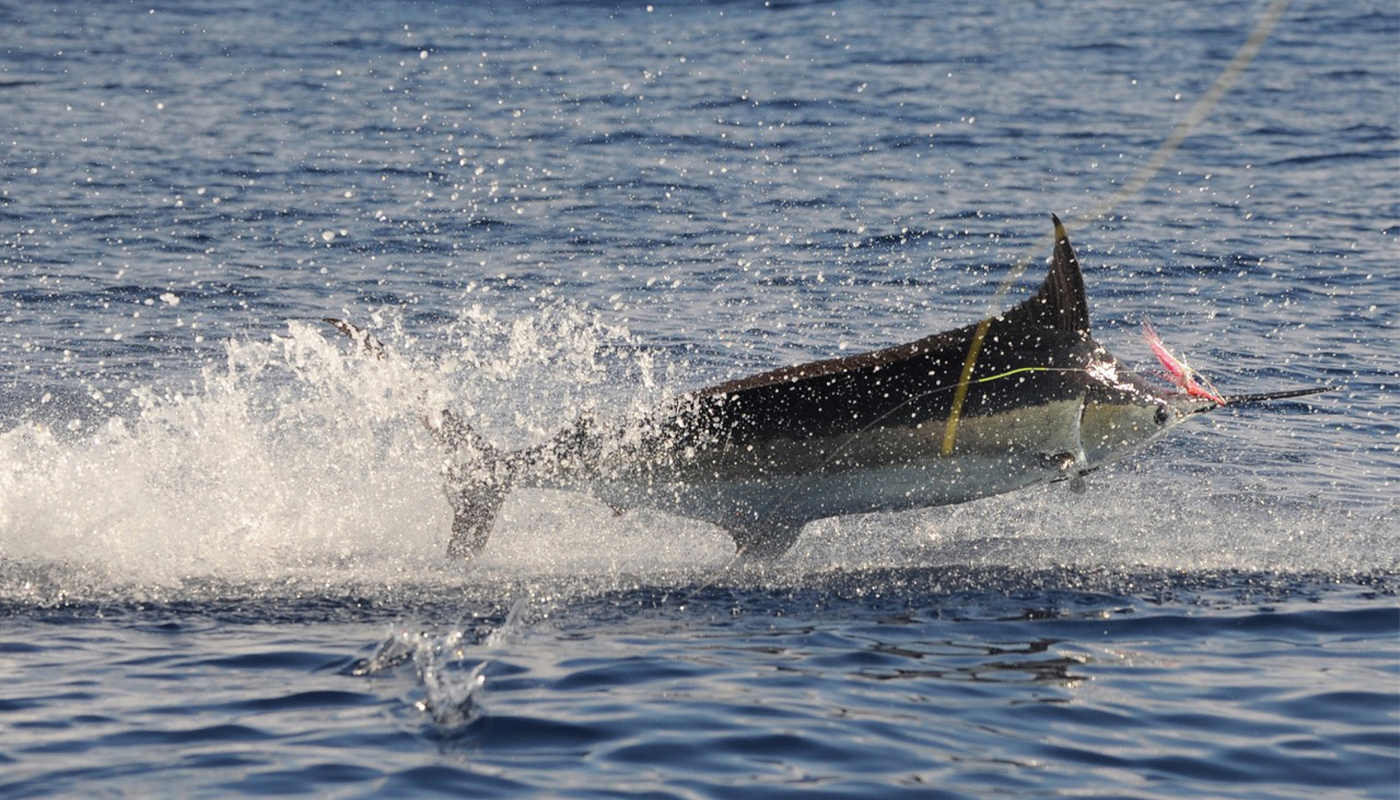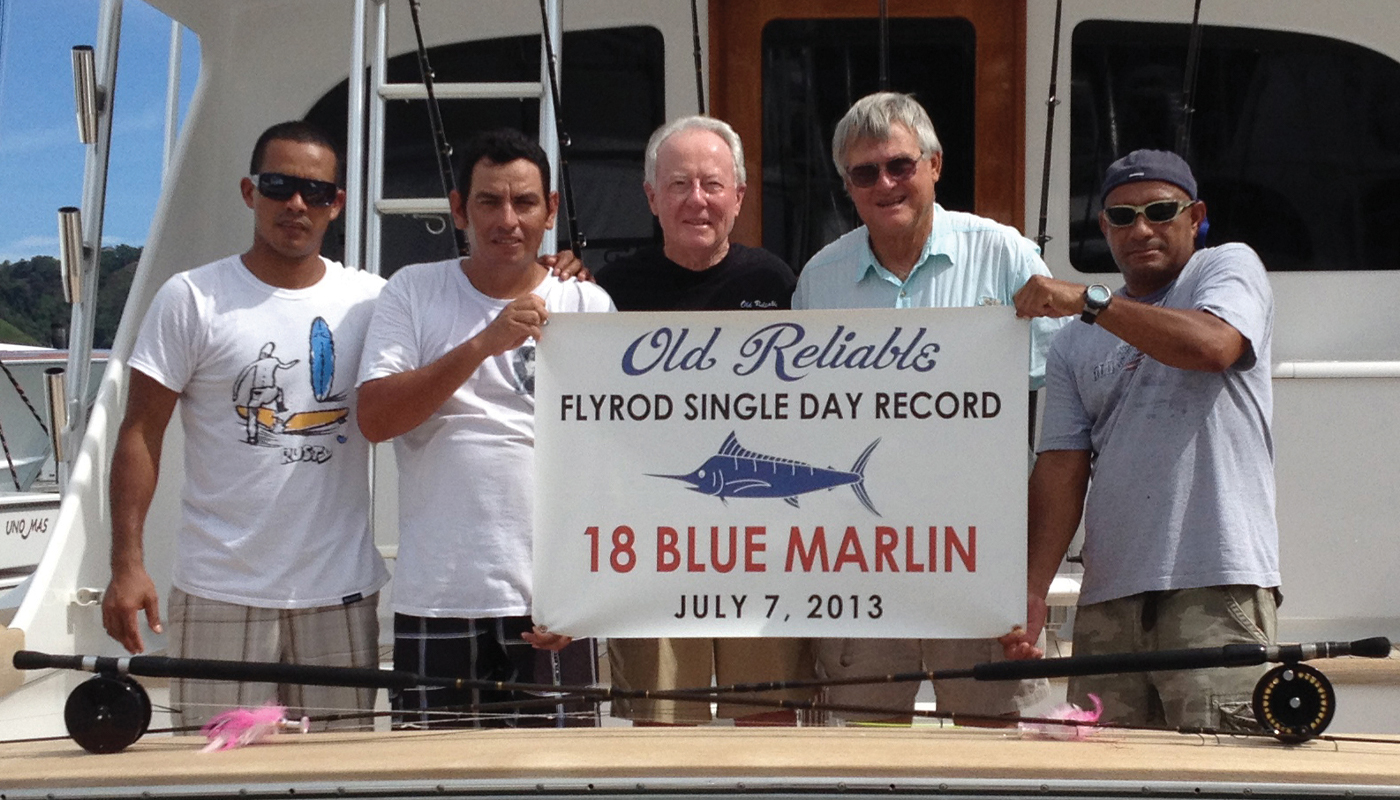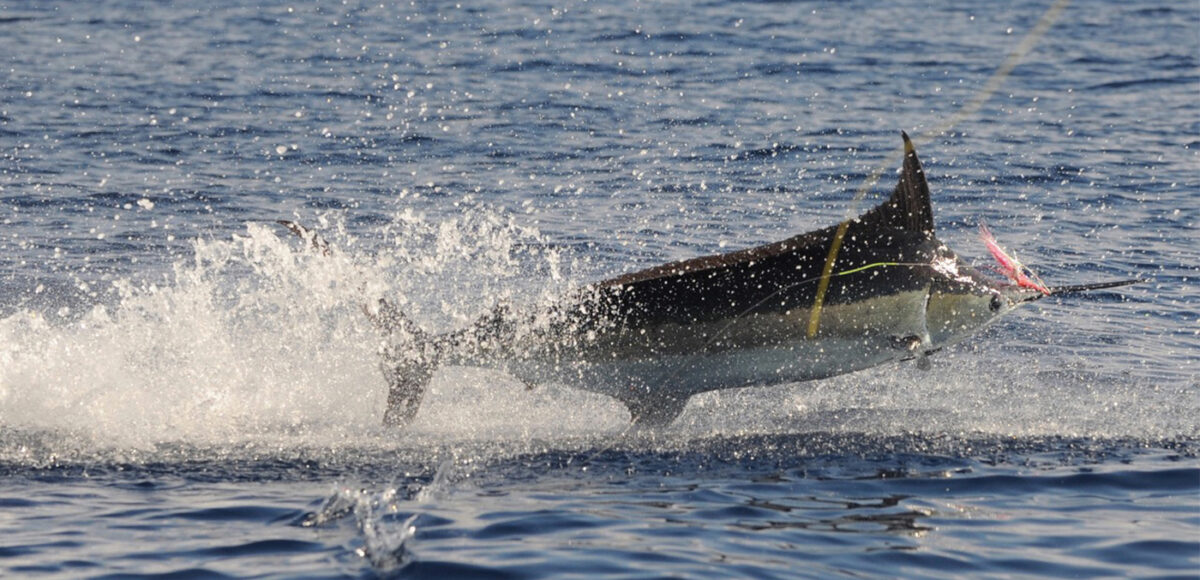Nick Smith is one of the world foremost billfish fly anglers. Here his rundown of what to expect and how to handle what happens between hook up and successful release of a blue marlin on the fly. The following assumes 20-pound class tippet (things change with lower test class tippets). This description begins with the strike, once the fish has taken the fly.
Because of its speed and explosiveness, the blue marlin is the most difficult billfish to catch on the fly. From an angler standpoint, the most important thing is drag management. There has to be the ability to hook the fish. This sounds pretty obvious, but blue marlin can strike the fly at high speed. The explosiveness of the fish can easily break the tippet.
There are two methods to strike the fish to set the hook. The first is the strip strike, where you set the hook by pulling the line. I cast with my right hand and hold the line in my left. With this technique the angler must be extremely good with the feel for how much pressure is applied with the fingers. The key is exerting enough pressure to penetrate the fish mouth but not enough to break the tippet, Smith says. Depending on the bite and how you need to position the fly, you may have stripped as much as 10-15 feet of line in presenting the fly so the angler has to be able to clear that line without tangles.
 The second method is to hook the fish with the drag of the reel, Smith says. His pre-strike drag position is five pounds. The drag must be reasonably tight. That said, and because marlin can attain warp speed almost immediately, the angler must be prepared to back the drag off”from five pounds at strike to as little as a half-pound. The angler must know how much to back the drag off based on the behavior of the fish. With either striking method, the angler must be prepared for rapid acceleration by the fish.
The second method is to hook the fish with the drag of the reel, Smith says. His pre-strike drag position is five pounds. The drag must be reasonably tight. That said, and because marlin can attain warp speed almost immediately, the angler must be prepared to back the drag off”from five pounds at strike to as little as a half-pound. The angler must know how much to back the drag off based on the behavior of the fish. With either striking method, the angler must be prepared for rapid acceleration by the fish.

Back the drag off and hang on. When targeting blue marlin on the fly, reaction time is critical. The angler must get a feel for what the fish is doing.
After the Hook Up Once the Fish is Line to Reel
I will leave the drag on the five-pound setting as long as I can to help set the hook. The angler has to sense when the fish is ready to accelerate. If the fish is screaming right away, I put the drag to around a half-pound. In some cases, there will be a gradual acceleration. If so, an intermediate setting would be called for. When blue marlin start jumping, they are almost always pulling drag rapidly. The angler must regulate the drag in accordance with the fish behavior, he describes. When a fish is screaming against a half-pound of drag, it will pull 300-400-yards of line out in seconds. If the fish goes straight, you have a reasonable chance at catching it. If the fish changes direction with lots of line out the extra pressure from the belly in the line will almost always break the line. I use a direct drive reel, not an anti-reverse. This allows the angler to fish a lighter drag, but palm the reel or in certain cases hold the handle to apply additional pressure. During the mid-stages of the fight, I almost never come to more than two-and-a-half pounds of drag. At some point in the fight, the fish will generally find a comfortable depth zone. They will put their pec fins out and cruise slowly to conserve energy. At that point, you need to apply more pressure to cause the fish to exert more energy, Smith describes. The angler must know exactly how much pressure he can apply with the tackle. I factor the abrasion on the class tippet from the bill and fins of the fish. Since the shock leader can only be 12-inches long. I assume that the class tippet strength is probably now around 15-pound test. But you can still apply lots of pressure on 15-pound.

From Mag Bay to Guatemala to Costa Rica, Nick Smith (center) has caught hundreds of marlin on fly tackle. His perspective on angling techniques can help anglers of any experience level.













